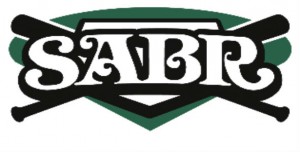 For those of you who are sabermetrically challenged, here is an introductory look into this basic stat.
For those of you who are sabermetrically challenged, here is an introductory look into this basic stat.
Here is the textbook description of VORP thanks to Baseball Prospectus.com.
VORP stands for Value Over Replacement Player, which is broken down as the number of runs contributed beyond what a replacement-level player at the same position would contribute if given the same percentage of team plate appearances.
However, Wikipedia defines value over replacement player (or VORP) in a slightly different way.
In baseball, value over replacement player (or VORP) is a statistic invented by Keith Woolner that demonstrates how much a hitter contributes offensively or how much a pitcher contributes to his team in comparison to a fictitious “replacement player,” who is an average fielder at his position and a below average hitter.[1] [2] A replacement player performs at “replacement level,” which is the level of performance an average team can expect when trying to replace a player at minimal cost, also known as “freely available talent.”
Although VORP sounds funny, it can be a very useful tool for the Sabermetrician or the fantasy baseball player/owner. It can help you to decide if a player is just on a hot streak or if he’s the real deal. Compare his VORP to others at his position and make wiser decisions in your league. What VORP does not take into consideration is a player’s defensive ability. This is one of the flaws I see in this statistic.
Here’s what Wikipedia says about the usefulness of VORP.
VORP’s usefulness is in the fact that it measures contribution at the margin (as in marginal utility). Other statistics compare players to the league average, which is good for cross-era analysis (example: 90 runs created in 1915 are much better than 90 RC in 1996, because runs were more scarce in 1915). However, league-average comparisons break down when considering a player’s total, composite contribution to a team. Baseball is a zero-sum game; in other words, one team can only win if another loses. A team wins by scoring more runs than its opponent. It follows, then, that a contribution of any runs helps a team toward a win, no matter how small the contribution. However, the Major Leagues are highly competitive, and talent distribution in baseball does not resemble normal distribution’s traditional “bell curve”; rather, the majority of players fall within the category of “below-average” or worse. Therefore, the so-called “average player” does not have a value of zero, like in Pete Palmer’s Total Player Rating, but instead is a valued commodity. One alternative is to rank players using “counting stats” — simply their gross totals — but this is unacceptable as well, since it is likely that the contribution a marginal player makes, even if it does help a team win one game, is not enough to justify his presence in the Majors. This is where the concept of the replacement level enters the picture.
As far as fantasy value goes, I think that VORP is a good tool for evaluating offensive talent given the above matrixes, but for MLB in general, I’d prefer to see a statistic developed that combines VORP with one’s deffensive aptitude. What do you think?
Next time out we will discuss the Sabermetric stat by the name of Runs Created which was mentioned above.










4 Responses
I discovered your blog on facebook groups. I just added you to my MSN News Reader. Keep up the good work pal! Look forward to reading more from you in the future.
Sorry for going offtopic, but where did you get this theme?
It’s a paid theme from the people at Solostream. You can check them out by clicking on the image above this post!